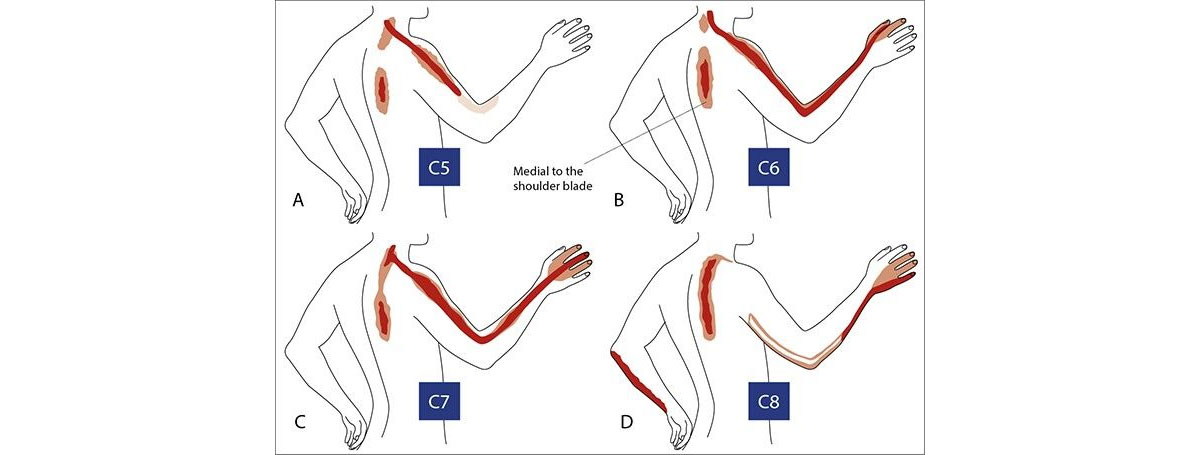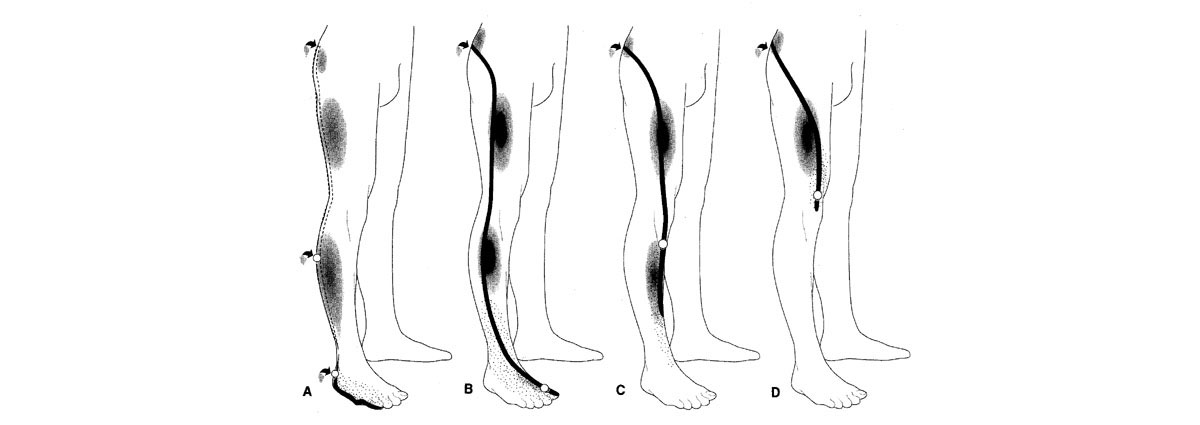What is it?
There are multiple types, but the two most common are cervical and lumbar radiculopathy. Cervical radiculopathy is a dysfunction of nerve roots of the neck. The seventh (C7; 60%) and sixth (C6; 25%) cervical nerve roots are the most commonly affected. Lumbar (or lumbosacral) radiculopathy is a dysfunction of nerves coming from the lower back. Both conditions can often mimic pain in the extremities but are actually due to pathology closer to the spine.


What causes it?
Radiculopathy can be caused by disc herniation, impingement due to boney changes in the spine, shifting of vertebrae due to injury, and less commonly diabetes or spinal tumors.
How do you know you have it?
Symptoms of pain, numbness, and tingling in the upper or lower extremities are the most common. They can present as muscular or joint pain, but only a professional medical provider can truly distinguish between an orthopedic injury and pain caused by a nerve root.
How is it treated?
Commonly, this condition can be alleviated by a number of methods that can be performed simultaneously. Oral medication or epidural steroid injections by a physician may or may not be obtained prior to starting a physical therapy regimen. The injection can be a single episode or a series of multiple injections depending on the severity of the inflammation near the spine. Whether or not you receive an injection, a physical therapy consult is warranted to address the symptoms, the cause and prevention of future occurrence. This is done by manual therapy (hands on), modalities such as spinal traction, and therapeutic exercise to support and stabilize the spinal column.